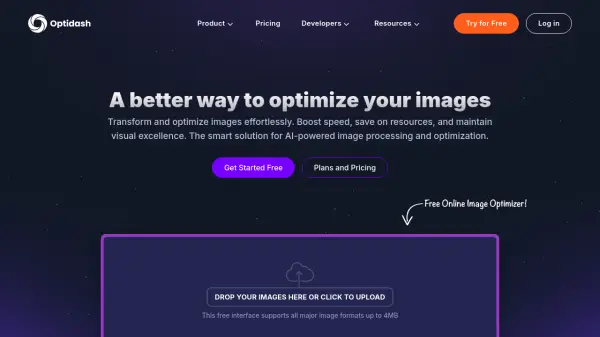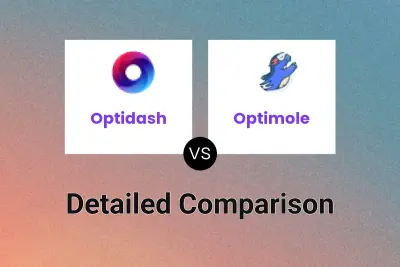What is Optidash?
Optidash provides an advanced solution for image processing and optimization, leveraging AI to enhance website and application performance. The platform enables users to automatically optimize large volumes of images, resulting in faster load times, improved Google rankings due to site speed enhancements, and significant savings on bandwidth and storage costs. By compressing images effectively, Optidash helps reduce hosting fees and contributes to increased user engagement and revenue through better site performance.
The tool offers both a user-friendly web interface for designers and manual optimization tasks, as well as a robust API for developers seeking seamless integration into their workflows. It supports integration with various e-commerce platforms like Magento, PrestaShop, and Shopware. Features include unlimited cloud storage for paying users, team management capabilities with role-based access control, detailed reporting, and enhanced security options like Two-Factor Authentication and SAML SSO.
Features
- AI-Powered Optimization: Intelligently compresses images to reduce file size while maintaining quality.
- Image Transformation: Resize, adjust saturation, add watermarks, and borders to images.
- API Integration: Robust API with client libraries for Node, Go, Ruby, Python, PHP, Java.
- Web Interface: Intuitive UI for manual optimization and management.
- Cloud Storage Integration: Connects with major cloud providers (AWS, GCP, Azure) for secure storage.
- Team Management: Role-based access control, unlimited team members (no per-seat charge).
- Enhanced Security: Supports Two-Factor Authentication (2FA) and SAML SSO.
- Detailed Reporting & Logs: Provides usage reporting and detailed audit logs.
- Unlimited Cloud Storage: Available for paying users.
Use Cases
- Improving website load speed for better user experience and SEO rankings.
- Reducing bandwidth and storage costs for web applications and sites.
- Optimizing images for e-commerce platforms (Magento, PrestaShop, Shopware).
- Automating image processing workflows for developers via API.
- Managing and optimizing design assets for designers through a web interface.
- Enhancing application performance by efficiently delivering optimized images.
FAQs
-
What types of image operations does Optidash support?
Optidash supports image optimization (compression), resizing, adjustments (like saturation), watermarking, and adding borders. -
Can I use Optidash with my existing cloud storage?
Yes, the Optidash API integrates seamlessly with major cloud storage providers like AWS, GCP, and Azure. -
Is there a limit on team members?
No, Optidash does not charge per seat, allowing you to invite as many colleagues as needed. Role-based access control is available. -
Does Optidash offer security features?
Yes, Optidash provides Two-Factor Authentication (2FA) and SAML Single Sign-On (SSO) for enhanced account security. -
Is there a free way to try Optidash?
Yes, Optidash offers a free web interface for optimizing images up to 4MB, and free account creation is available with access to features, though likely with limitations compared to paid plans.
Related Queries
Helpful for people in the following professions
Optidash Uptime Monitor
Average Uptime
99.41%
Average Response Time
147.5 ms
Featured Tools
Join Our Newsletter
Stay updated with the latest AI tools, news, and offers by subscribing to our weekly newsletter.












